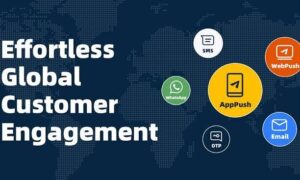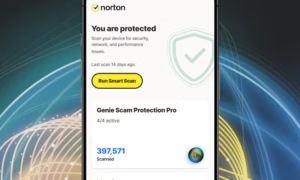In 2022, there were 5,044,748 new businesses established in the United States, according to Zippia stats. Are you a business startup owner looking to grow your business? One of the biggest challenges for business owners is customer acquisition.
You may be offering great products or services. But without a proper customer acquisition strategy, your business may not grow as fast as you would like it to.
In this guide, we will show you how to create the perfect customer acquisition strategy. This will help you generate more leads and grow your business.
Let’s jump right into this!
Business Growth and Marketing Costs
One of the biggest challenges for business owners is marketing costs. Marketing is essential for customer acquisition, but it can also be expensive.
Many business owners end up spending more money on marketing than they can afford, which can hurt their bottom line. However, there are several strategies that you can use to keep your marketing costs low and still generate high-quality leads.
Online Business and Lead Generation
If you’re running an online business, lead generation is essential for your success. Lead generation refers to the process of attracting potential customers to your website. Then, the idea is to convert them into paying customers.
There are several ways to generate leads. This includes SEO, social media, email marketing, and content marketing.
Starting a Business
Starting a business can be overwhelming, and it’s easy to get lost in the details. However, it’s important to have a customer acquisition strategy in place from the start. Without a strategy, you’ll be wasting time and money on marketing efforts that may not work for your business startup.
Now let’s look at some steps to help you build your strategy so that starting a business doesn’t have to be as painful as you might think:
1. Identify Your Target Audience
The first step to creating a customer acquisition strategy is to find your target audience. Your target audience is the group of people who are most likely to buy your products or services.
You can find your target audience by researching your competitors and analyzing your website traffic. You can also conduct customer surveys.
Plus, you can create buyer personas to help you better understand your ideal customer. A buyer persona is a fictional representation of your ideal customer. This can include demographics, behaviors, and pain points.
Creating buyer personas can help you tailor your marketing messages. You may also better connect with your target audience.
Once you’ve identified your target audience, it’s important to keep evaluating your understanding of them. Gathering feedback from customers can help you stay in tune with their needs and preferences.
2. Determine Your Unique Selling Proposition
Your unique selling proposition (USP) is what sets your business apart from your competitors. Your USP should be a clear and concise statement that explains what you offer that no one else does. It’s a good idea to show your USP on your website and in your marketing materials.
Your unique selling proposition can also be used as a tool for differentiating your business from your competitors. Always try to evaluate your USP and make sure that it remains relevant and compelling to your target audience. As your business grows and evolves, your USP may need to update your USP.
It’s also important to ensure that you reflect your USP in all aspects of your business. It can feature in your marketing materials right through to your customer service interactions. Consistency in messaging and branding is key to building a memorable brand.
3. Choose Your Marketing Channels
There are several marketing channels that you can use to reach your target audiences, such as SEO, social media, email marketing, and content marketing. Choose the channels that are most likely to reach your target audience and that fit within your budget.
When choosing your marketing channels, it’s important to consider not only where your target audience spends their time, but also which channels are most effective at driving conversions. Social media may be a great way to build brand awareness, but email marketing may be more effective at driving sales.
In addition to choosing your channels, it’s important to regularly evaluate their performance and make adjustments as needed. This may involve experimenting with different messaging or tactics or shifting your focus to a different channel altogether.
4. Create Compelling Content
Compelling content is essential for attracting and retaining customers. Your content should be informative, engaging, and relevant to your target audience. Create content that solves problems or answers questions that your target audience may have.
Creating compelling content is an ongoing process that requires a deep understanding of your target audience’s needs and interests. In addition to blog posts and articles, consider creating other types of content such as videos, podcasts, or webinars.
It’s also important to optimize your content for search engines by using relevant keywords and meta tags. This can help improve your search engine rankings and make it easier for potential customers to find you.
5. Optimize Your Website
Your website is the face of your business online, and it’s important to make a good first impression. Your website should be easy to navigate, mobile-friendly, and optimized for search engines. Make sure that your website is visually appealing and that your USP is prominently displayed.
Optimizing your website for search engines is an important part of any customer acquisition strategy, but it’s also important to focus on the user experience. This means making sure your website is easy to navigate, loads quickly, and provides clear and concise information.
In addition to the design and functionality of your website, it’s also important to ensure that it is secure and compliant with any relevant regulations such as GDPR or CCPA. Failing to do so can not only harm your reputation but also result in costly fines or legal issues.
6. Track Your Results
Tracking your results is essential for determining what’s working and what’s not. Use analytics tools to track your website traffic, social media engagement, email open rates, and other metrics. Use this information to adjust your marketing strategy and to make improvements to your website.
Tracking your results is not only crucial for determining what’s working and what’s not, but it’s also essential for understanding your audience’s behavior. By tracking your website traffic and social media engagement, you can gather valuable insights about your target audience, such as their interests, preferences, and demographics. This information can help you refine your marketing messages and create more effective campaigns that resonate with your audience.
In addition to tracking your results, it’s important to set specific goals for your marketing efforts. Your goals should be measurable, achievable, and aligned with your overall business objectives.
For example, if your goal is to increase website traffic by 20%, you can use analytics tools to track your progress and adjust your strategy accordingly. By setting goals and tracking your results, you can ensure that your marketing efforts are focused and effective, and you can make data-driven decisions that drive business growth.
7. Understand the Customer Journey
To create an effective customer acquisition strategy, you must first understand the customer journey. The customer journey is the process that a customer goes through from the moment they first hear about your business to the moment they become a paying customer. Understanding the customer journey is essential for creating marketing materials that speak to the customer at each stage of the journey.
The customer journey often has four stages: awareness, consideration, decision, and retention. During the awareness stage, the customer becomes aware of your business and what you offer.
During the consideration stage, the customer considers whether your business is a good fit for their needs. During the decision stage, the customer decides whether to buy from you. Finally, during the retention stage, the customer becomes a loyal customer and continues to buy from you.
8. Set Goals and Metrics
To create an effective customer acquisition strategy, you must set goals and metrics. Goals are the objectives that you want to achieve, while metrics are the data points that you use to measure progress toward those goals. Setting goals and metrics helps you to stay focused and ensures that your marketing efforts are aligned with your business objectives.
When setting goals and metrics, it’s important to make sure that they are specific, measurable, attainable, relevant, and time-bound. For example, a goal could be to increase website traffic by 20% in the next three months, and a metric could be website traffic as measured by Google Analytics.
9. Use Paid Advertising
Paid advertising can be an effective way to generate leads and grow your business. Paid advertising includes channels such as Google Ads, Facebook Ads, and LinkedIn Ads. Paid advertising allows you to target specific audiences and can be a cost-effective way to reach new customers.
When using paid advertising, it’s important to set a budget and track your results. You can use A/B testing to test different ad variations to see which ones are the most effective. Paid advertising can be a powerful tool, but it should be used in conjunction with other marketing strategies.
10. Focus on Customer Retention
Customer retention is an essential part of any customer acquisition strategy. It’s easier and less expensive to retain existing customers than it is to acquire new ones. Happy customers are also more likely to refer others to your business.
To focus on customer retention, you can offer incentives such as loyalty programs, discounts, or exclusive offers. You can also ask for feedback from customers to see how you can improve your products or services. Finally, you can provide excellent customer service to ensure that your customers are happy with their experience.
11. Build a Strong Brand
Building a strong brand is essential for customer acquisition. Your brand is what sets you apart from your competitors and helps to build trust with your customers. A strong brand is memorable, consistent, and authentic.
To build a strong brand, you should start by defining your brand values and mission. You should also develop a brand voice and visual identity that is consistent across all of your marketing materials. Finally, you should focus on building relationships with your customers to create a sense of community around your brand.
12. Leverage Referral Marketing
One of the most effective and cost-efficient ways to acquire new customers is through referral marketing. Referral marketing is when your existing customers recommend your products or services to their friends, family, or colleagues. These referrals are more likely to convert into paying customers because they come with a personal recommendation from someone they trust.
To leverage referral marketing, you can create a referral program that rewards customers for referring new business to you. This can be as simple as offering a discount or bonus to customers who refer a friend or family member. You can also make it easier for customers to refer others by providing them with shareable links or social media posts.
Make sure to track the performance of your referral program. You should then adjust your rewards or messaging as needed so that it remains effective.
Referral marketing can be a powerful tool for growing your business. Yet it requires ongoing effort and attention to be successful.
The Importance of Customer Acquisition Strategy
Creating the perfect customer acquisition strategy takes time and effort. But it’s essential for growing your business. By following the steps outlined in this guide, you can create a strategy that will help you expand your enterprise.
Also, don’t forget to track your results and make adjustments as needed. Good luck!
If you enjoyed this article, click on the site logo above to find more blog articles on our website.


































